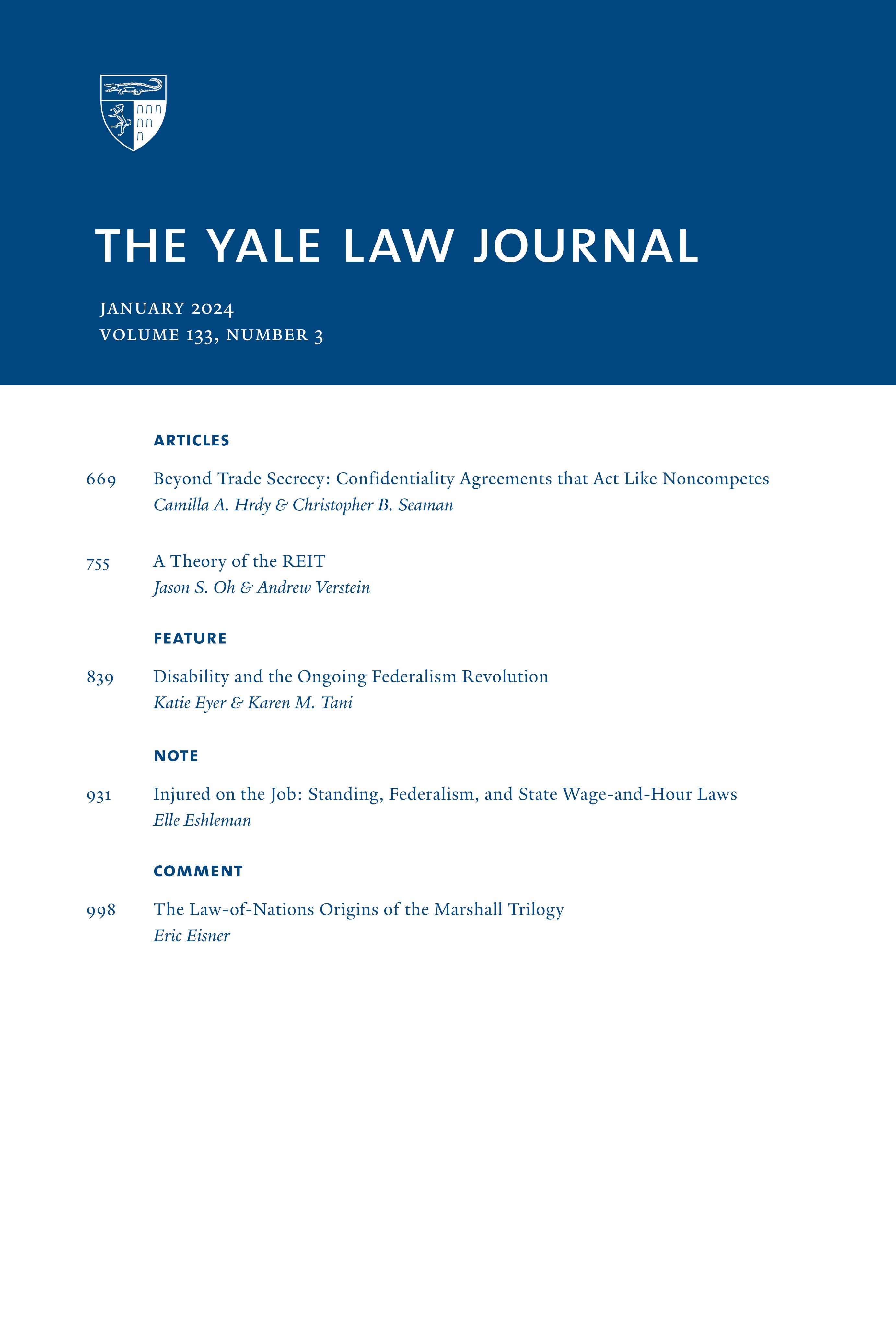Antislavery Courts and the Dawn of International Human Rights Law
IF 5.2
1区 社会学
Q1 LAW
引用次数: 52
Abstract
Between 1817 and 1871, bilateral treaties between Britain and several other countries (eventually including the United States) led to the establishment of international courts for the suppression of the slave trade. Though all but forgotten today, these anti-slavery courts were the first international human rights courts. They were made up of judges from different countries. They sat on a permanent, continuing basis and applied international law. They were explicitly aimed at promoting humanitarian objectives. Over the lifespan of the treaties, the courts heard more than 600 cases and freed almost 80,000 slaves found aboard illegal slave trading vessels. During their peak years of operation, the courts heard cases that may have involved as many as one out of every four or five ships involved in the trans-Atlantic slave trade.These international anti-slavery courts have been given scant attention by historians, and have been almost completely ignored by legal scholars. Most legal scholars view international courts and international human rights law as largely a post-World War II phenomenon, with the Nuremberg trials of the Nazi war criminals as the seminal moment in the turn to international law as a mechanism for protecting individual rights. But in fact, contrary to the conventional wisdom, the nineteenth century slavery abolition movement was the first successful international human rights campaign, and international treaties and courts were its central features. In addition to being of intrinsic historical interest, the story of the anti-slavery courts has important implications for contemporary issues in international law. The history of the anti-slavery courts reveals a more complex interrelationship between state power, moral ideas, and domestic and international legal institutions than many contemporary theories of international law and relations acknowledge. Moreover, the anti-slavery movement's use of international law and legal institutions as part of a broader social, political and military strategy can help us better understand the potential role of international law today in bringing about improvements in human rights.反奴隶制法庭与国际人权法的曙光
1817年至1871年间,英国与其他几个国家(最终包括美国)签订了双边条约,建立了国际法庭,以镇压奴隶贸易。这些反奴隶制法庭是最早的国际人权法庭,尽管今天几乎被人遗忘。他们由来自不同国家的法官组成。它们是永久的、持续的,并适用国际法。它们的明确目的是促进人道主义目标。在条约的有效期内,法院审理了600多起案件,释放了在非法奴隶贸易船上发现的近8万名奴隶。在其运作的高峰时期,法院审理的案件可能涉及跨大西洋奴隶贸易中每四到五艘船中就有一艘。历史学家很少注意到这些国际反奴隶制法庭,法律学者几乎完全忽视了这些法庭。大多数法律学者认为,国际法院和国际人权法在很大程度上是二战后的现象,对纳粹战犯的纽伦堡审判是将国际法作为保护个人权利机制的开创性时刻。但事实上,与传统观念相反,19世纪的废奴运动是第一次成功的国际人权运动,国际条约和法院是其核心特征。除了具有内在的历史意义外,反奴隶制法庭的故事对当代国际法问题也有重要的影响。反奴隶制法院的历史揭示了国家权力、道德观念、国内和国际法律制度之间比许多当代国际法和关系理论所承认的更为复杂的相互关系。此外,反奴隶制运动利用国际法和法律机构作为更广泛的社会、政治和军事战略的一部分,可以帮助我们更好地理解今天国际法在改善人权方面的潜在作用。
本文章由计算机程序翻译,如有差异,请以英文原文为准。
求助全文
约1分钟内获得全文
求助全文
来源期刊

Yale Law Journal
LAW-
CiteScore
4.50
自引率
6.20%
发文量
0
期刊介绍:
The Yale Law Journal Online is the online companion to The Yale Law Journal. It replaces The Pocket Part, which was the first such companion to be published by a leading law review. YLJ Online will continue The Pocket Part"s mission of augmenting the scholarship printed in The Yale Law Journal by providing original Essays, legal commentaries, responses to articles printed in the Journal, podcast and iTunes University recordings of various pieces, and other works by both established and emerging academics and practitioners.
 求助内容:
求助内容: 应助结果提醒方式:
应助结果提醒方式:


